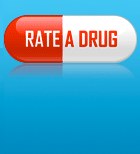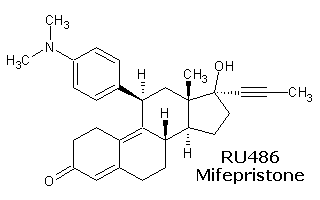 The medicalization of many social facets of our lives, multitasking pharmaceuticals and disease mongering are problems we should face head on.
The medicalization of many social facets of our lives, multitasking pharmaceuticals and disease mongering are problems we should face head on.
The overlap between business ethics and medical ethics represent a moral minefield. Nowhere more so than in the domain of newly recognised and previously untreated disorders, syndromes and diseases, among them social anxiety disorder, non-physiological erectile dysfunction, aging, fibromyalgia, adult attention deficit hyperactivity disorder (ADHD), restless leg syndrome and female sexual dysfunction.
And for those who only read this far, my take away message is not to claim that such conditions are not real to those who suffer from them. Indeed, I actually suffer from irritable legs syndrome (as does my dad). It’s very real, very uncomfortable, and a real problem especially when it hits in a crowded and stuffy theatre with no option to take a hot bath or go for a jog to alleviate the unscratchable symptoms. Personally, I would love to have some way to make it stop when it gets bad and if that were a once a week pill, so be it.
Diagnoses can be very real and finding effective treatments certainly worthwhile, but it is the interests of patients that should be served and not purely those of pharma industry shareholders when a condition is medicalized.
Some observers have suggested that the process of medicalization, in which issues and problems have migrated into the scientific realm coincides with the demise of traditional values. They suggest that this migration may involve less of an improvement in understanding our biology and more of a change in social attitudes and terminology, with people suffering ambiguous symptoms and their advocates essentially feeding the beast.
This is sometimes no bad thing if it means previously unrecognised medical problems can be treated on the basis of scientific evidence rather than so-called received wisdom. However, medicalization is more often than not considered disease mongering. Writing in IJBGE, Geoffrey Poitras of the Simon Fraser University, in Vancouver, British Columbia, Canada, points out that there are two threads to the process of medicalization.
The first is social medicalization, which he describes as a form of social control in which individuals and their problems are taken into the fold of the medical establishment and can be manipulated. “One unexplored aspect of medicalization is associated with recreational drug use, from Valium to Viagra, threatening to ‘scientifically’ engineer various forms of drug addiction under the guise of medical treatment,” Poitras told Sciencebase.
The second thread is economic medicalization, the “transformation of the process for doing clinical trials into exercises that are motivated more as marketing vehicles than needed R&D.” This, he adds, is driven by the pharmaceutical companies and by the medical profession which benefits financially from the need to recruit patients into trials for fledgling disorders.
Another aspect of economic medicalization concerns the multitasking of drugs, more formally known as off-label prescription usage. Having gone through costly R&D, there is an economic incentive to find additional applications for any given approved drug.
Market researcher Megann Willson does lots of work interviewing physicians so finds medicalization an interesting concept. She points out that plain old garden variety depression in women now has a secondary indication called “premenstrual dysphoric disorder”. In that case, she asks, “Is the disorder truly latent or did we create a new indication and then find what we want to find?” She says that in Canada, “the acceptance or approval of a new drug indication is governed as much by reimbursement formulae as it is by whether there’s a good health rationale.”
Similarly, another area of female health that has been medicalized is post-partum depression, says Torr-Brown. “The real solution may be to increase socialization options for mothers with newborns,” she says, “Also, not sending them home after 24 hours at the hospital might help. In countries where there is good support for new mothers, post-partum depression is almost unheard of. We put it down to hormones, but in reality it may be the sense of being alone in the face of an overwhelming new challenge in caring for a new born.”
But, as alluded to earlier, there can be a positive side to medicalization from the individual’s point of view, suggests health strategist Christopher Ervin. “There is a potential good,” he says, “with hopes that people become more aware of their bodies and the functioning of the systems.” However, he also points out that people will begin to consider the human body as a perfect machine, and that any ailment can be instantly fixed with a pill. “I think [medicalization] will raise unrealistic expectations of the healthcare system to ‘cure’ people,” he adds, “Also it will absolve people from making efforts to care for themselves and better manage their health independently.”
Medical lawyer David Marshall agrees that the relabelling of any ‘normal’ human condition as a ‘medical problem’ is controversial. The label premenstrual dysphoric disorder is a case in point in which some observers suggest that it results from a patriarchal medical profession hoping to medicalize the menstrual cycle to justify marketing pharmaceuticals to treat the disorder, he explains. “This requires us to make a distinction based on supposed motives. If there is such a thing, pure medical research is engaged in the dispassionate search for a better understanding of human biology. As an incidental by-product of this better understanding, new forms of treatment or cure may emerge,” Marshall adds.
Big pharma exists to make big profits and this leads research down avenues where no competitor drugs exists. “The absence of drugs is often because the ‘problems’ are not considered medical,” suggests Marshall, “So, for example, major drug companies have spent several billion dollars trying to produce weight loss drugs when, arguably, excess weight is a lifestyle choice not a disorder (the confusion arising because hypertension and cardiovascular disease are co-morbidities to obesity).”
“In principle, the identification of a new disease or disorder is good for those that suffer without treatment because it offers hope,” adds Marshall, “But the creation of a new disease or disorder for the purpose of marketing a drug is only benefiting the pharmaceutical industry.”
So is medicalization a menace? In Norway, ADHD is “treated” by starting children at school later in Norway rather than prescribing Ritalin. Is normal sadness, through reclassification as a major depressive disorder, stifling the creativity often associated with melancholy? And, what is the true nature of the therapeutic options for people labelled mentally ill?And, what about the medicalization of childhood?
Sheryl Torr-Brown offers a useful perspective from 20 years experience in the industry. “I think [medicalizatio] is probably neither a good nor bad thing but somewhere in between,” she told Sciencebase, “If there is genuine reason to believe that the quality of life can be improved by the medicalization (and thus potentially treatment) of a previously latent condition, then it can be good.”
However, she points out that the very definition of quality-of-life has to be questioned. This is a controversial area in an age of rampant pill-popping with the expectation of instant fixes with no side effects. “Is ADHD a treatable condition, or a variant of human personality that confers advantage in systems less inclined to conformity and control than ours,” she asks.
“In that vast grey zone called healthcare, where along the spectrum between a true latent or rare disorder, a psycho-social behaviour variant or just a kink in the system does it necessitate pharmaceutical intervention,” asks Ervin.
It’s worth repeating, pharma companies enjoy increased profits because of medicalization, but that does not mean that we should not be treating previously latent disorders. Quality of life might be improved for countless individuals with new treatments whether pharmacological, physical or psychological. We should all think more critically about our options, although that can be difficult for some people simply not trained in critical thinking. “I think if individuals were able to think critically about their options, medicalization would be workable,” adds Torr-Brown. After all, your particular take on the human condition may one day be recognised as a disorder by the medical profession, but it remains your choice as to whether take the medicine.
 Poitras, G. (2009). Business ethics, medical ethics and economic medicalization International Journal of Business Governance and Ethics, 4 (4) DOI: 10.1504/IJBGE.2009.023789
Poitras, G. (2009). Business ethics, medical ethics and economic medicalization International Journal of Business Governance and Ethics, 4 (4) DOI: 10.1504/IJBGE.2009.023789
Could a simple dietary change that increases glutathione, or indeed supplementation with this tripeptide be all you need to boost your immune system and ward of influenza?
 German researchers have used the powerful analytical technique of X-ray diffraction to home in on an important metabolic reaction used by all pathogenic bacteria and the malaria parasite. The detailed structure of the IspH enzyme active site they revealed, which resembles a shamrock in shape, and has an Fe-S cluster at its core, could offer a promising new target for novel antibiotics that might stave off bacterial resistance.
German researchers have used the powerful analytical technique of X-ray diffraction to home in on an important metabolic reaction used by all pathogenic bacteria and the malaria parasite. The detailed structure of the IspH enzyme active site they revealed, which resembles a shamrock in shape, and has an Fe-S cluster at its core, could offer a promising new target for novel antibiotics that might stave off bacterial resistance. The medicalization of many social facets of our lives, multitasking pharmaceuticals and disease mongering are problems we should face head on.
The medicalization of many social facets of our lives, multitasking pharmaceuticals and disease mongering are problems we should face head on. A new(ish) website has launched that aims to provide unbiased patient-generated data on the benefits of 7000 prescription medications and their side-effects.
A new(ish) website has launched that aims to provide unbiased patient-generated data on the benefits of 7000 prescription medications and their side-effects.
